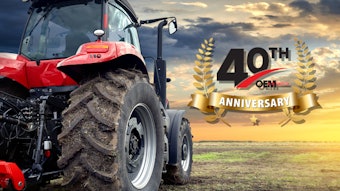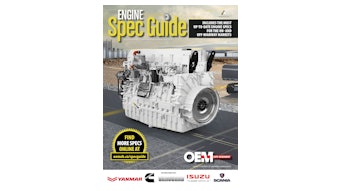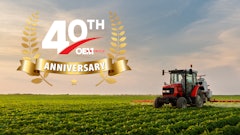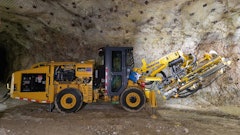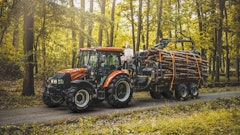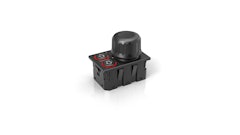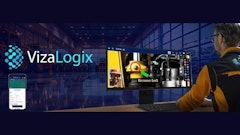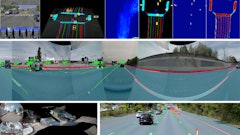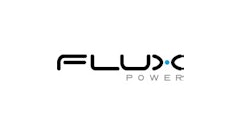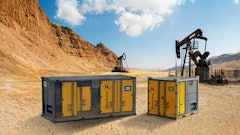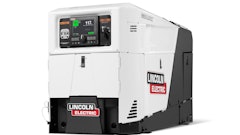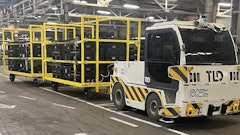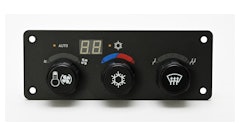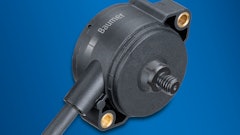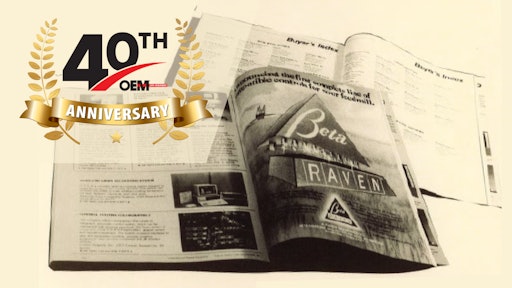
As OEM Off-Highway marks its 40th anniversary in 2024, we reflect on the incredible journey the brand — and the industry as a whole — has had over the past four decades. From humble beginnings to becoming a staple of the industry, OEM Off-Highway has been a platform for showcasing innovation, excellence and progress.
To mark this significant milestone, we're exploring both the past and the future. In our continued coverage, we take a look at some of the more sizeable shifts and track the trends that have helped to shape off-highway equipment as we know it today.
This year, OEM Off-Highway celebrates its 40th anniversary. For the past four decades, this brand and its media products have been dedicated to delivering to readers the important, breaking news and trend-setting design developments happening throughout the on- and off-highway mobile equipment industry.
What was initially established as an agricultural supplement has today become a multifaceted brand comprised of industry-leading digital properties, magazines, e-newsletters, videos, webinars, podcasts, whitepapers, social media platforms and more, accessed daily by thousands of engineers and designers around the world.
Cut from the same cloth as its former sister publication, Farm Equipment magazine, Johnson Hill Press (JHP) founded the brand we know today as OEM Off-Highway in 1984. Originally recognized as Farm Equipment - OEM, it first served only readers within the agricultural equipment sector. By 1987, the brand was simply known as OEM, which opened its readership to design engineers and purchasing agents at agricultural, construction and light industrial manufacturing facilities throughout North America. Willie Vogt was named editor of the brand in 1985 and began to shape content and help to form the OEM Off-Highway brand you know today.
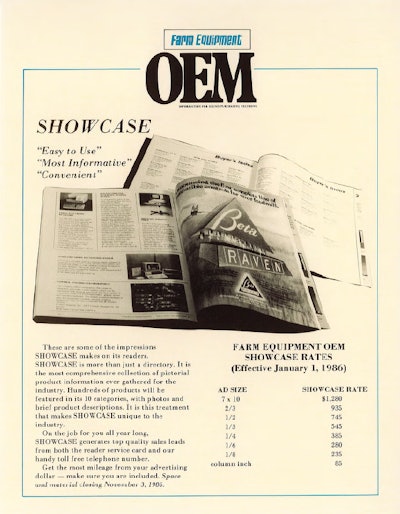 This 1986 rate card details the advertising opportunities to participate in the brand’s showcase issue, a special issue of OEM Off-Highway’s print magazine that is still in production in today.
This 1986 rate card details the advertising opportunities to participate in the brand’s showcase issue, a special issue of OEM Off-Highway’s print magazine that is still in production in today.
According to the brand’s early literature, “Farm Equipment - OEM began as a publication presenting readers with information about dozens of new products each issue. In 1985, OEM took the next step, providing not only new and innovative products for the ag manufacturer, but also insights into how other design engineers, purchasing personnel and corporate decision makers were finding solutions to the day’s most current challenges. Our aim is to do more than just provide interesting reading. It is to help our readers make better decisions in their companies by expanding their body of knowledge.”
This original brand vision still stands strong today as OEM Off-Highway’s in-depth reporting on trends, technology developments, engineering innovations and new product releases keep its readers informed of the latest information, products and data in a dynamic and rapidly changing global industry.
Vogt recalls fine-tuning the publication’s focus in the early ‘80s: “The manufacturing landscape was changing and there was a growing need for information to help companies explore new approaches or take on innovations in manufacturing,” said Vogt.
According to Vogt, readers wanted not only to know what was new on the market, but also learn more about the forces impacting manufacturing and hear how companies were achieving success in new areas of interest. “Those early new stories dug into ergonomics, expanded equipment testing and more,” said Vogt. “Across the off-highway industry, companies were tightening their belts while working to maintain equipment quality. It wasn’t easy, but new approaches were coming from robotic welding to enhanced parts management.”
As equipment technology developed and innovation brought forth new efficiencies, OEM Off-Highway stepped up to cover the importance of these topics. “Add in the new tech tools to speed product development,” said Vogt. “Finite element analysis alone changed the way engineers viewed the materials needed for equipment. They could design a machine using thinner steel, or even advanced plastics, in some areas to cut weight and cost while still maintaining equipment durability and quality,” said Vogt.
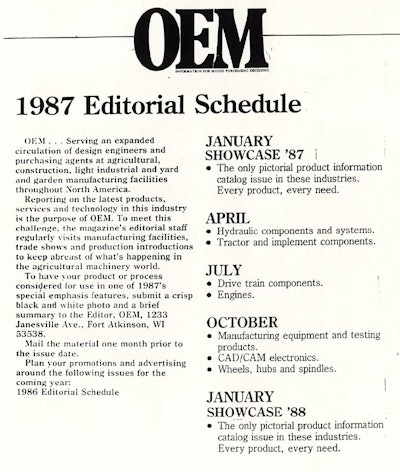 OEM’s 1987 Editorial Schedule highlights the topics of particular focus in upcoming issues of the print publication.
OEM’s 1987 Editorial Schedule highlights the topics of particular focus in upcoming issues of the print publication.
As manufacturing trends continued to drive change throughout the ‘80s and into the ‘90s, manufacturers called on OEM Off-Highway as a resource. Curt Bennink, who joined the team in 1992 and became editor in 1997, recalls a significant shift in the streamlining of manufacturing strategies. “The off-road machinery manufacturing sector continually evolves as manufacturers chase the next competitive edge that elevates customer expectations,” said Bennink. “The pace of that change kicked into high gear as the industry moved into an era where computers, data and the emergence of sophisticated electronics transformed the off-highway manufacturing landscape. With each passing year the pace of change picks up momentum, making it more challenging for OEMs to stay abreast of these developments.”
This decade brought on a transformation of the production and assembly processes, with a rise in interest of robotic welding and a push for factory automation. “As the production line transformation progressed, there was a renewed focus on defining manufacturing processes,” said Bennink. “ISO 9001:2000 quality management emerged as a way manufacturers could demonstrate their ability to produce consistent product quality. Many manufacturers began to pursue certification to this international standard. Processes were painstakingly documented to ensure repeatable results.”
At the same time, the publishing world was also changing. OEM Off-Highway’s original publisher, JHP, would eventually become Cygnus Business Media in 1997. And for the next 17 years under its stewardship, OEM Off-Highway would herald both on- and off-highway OEMs through a time of great regulatory transition.
Throughout the ‘90s, the emergence of diesel emissions standards played a critical role in product development and manufacturing. “[This] changed the product development cycle for diesel-powered equipment, which continues to reverberate through the industry until this day,” said Bennink.
“The first Tier 1 diesel emission standard was published in 1991 and took effect in 1996. It set limits on NOx emissions on engines over 50 hp,” said Bennink. “This was followed by a series of increasingly stringent regulations in the form of Tier 2, Tier 3, Tier 4 interim and Tier 4 final. Each stage included tighter emissions limits for NOx and Particulate Matter (PM) broken out by engine horsepower.”
According to Bennink, this major challenge was faced by both engine suppliers and OEMs, who were expected to increasingly invest in R&D to modify machines at each Tier. “At each Tier of emissions, the OEM R&D departments were challenged to maintain fuel efficiency and increase performance to help offset the mandatory increase in complexity and cost,” said Bennink. “For instance, mechanical engines transitioned to electronically controlled engines. This opened a whole realm of new possibilities for many OEMs.”
As the World Wide Web and internet access reached the public and met more mainstream use throughout the late ‘90s and into the early 2000s, equipment OEMs began to integrate more emerging electronics and equipment technologies, including smart systems, GPS technologies and telematics capabilities, Wi-Fi and mobile connectivity and more, embracing a new era in equipment technology across multiple sectors. This shift in data-driven equipment brought landmark improvements to machine precision, accuracy and efficiency.
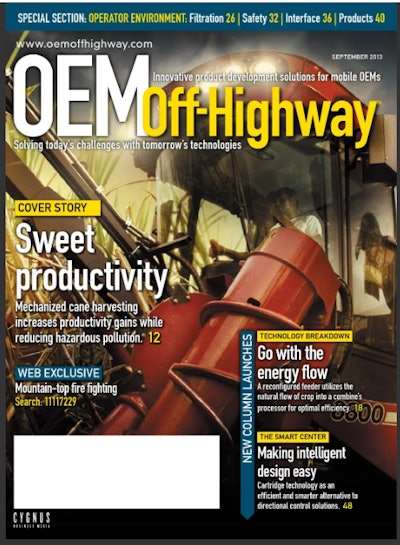 This 2013 cover of OEM Off-Highway directs readers to web-exclusive content, aiming to incorporate the brand's growing online presence.
This 2013 cover of OEM Off-Highway directs readers to web-exclusive content, aiming to incorporate the brand's growing online presence.
Following the boom and bust of The Great Recession in the late 2000s, OEMs would also face the challenge of phasing in new emissions standards throughout the 2010s. In 2014, Tier 4 was nearing full implementation as OEM Off-Highway was changing ownership one final time.
AC Business Media, now known as IRONMARKETS, acquired OEM Off-Highway in 2014 and continues to support and elevate the brand’s original vision: helping readers to make better decisions and expand their body of knowledge. With IRONMARKETS backing the brand, OEM Off-Highway has continued to grow alongside its readers’ thirst for knowledge, introducing the OEM Industry Update podcast in 2020 and the OEM Industry Summit in 2022.
Forty years strong and looking forward, OEM Off-Highway remains more engrained than ever in the future of the mobile equipment industry and those who lead its designs and developments.
For more on OEM Off-Highway's 40th anniversary, check out our additional and extended coverage.
